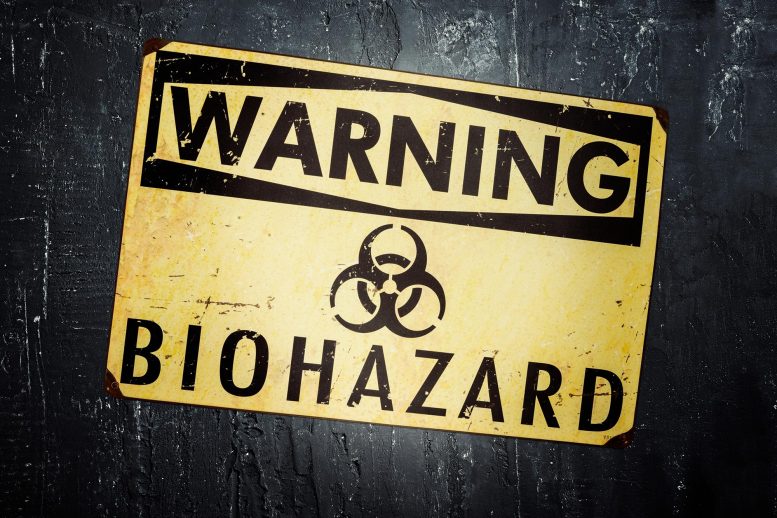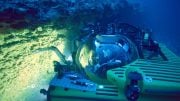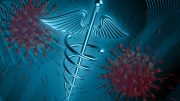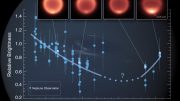
A study published in the peer-reviewed academic journal Risk Analysis suggests a higher probability of COVID-19 originating from a laboratory rather than naturally.
Research points to an unnatural origin as the likely source for COVID-19.
The origin of COVID-19 is highly debated – most studies have focused on a zoonotic origin, but research from the journal Risk Analysis, examined the likelihood of an unnatural origin (i.e. from a laboratory.)
The results indicate a greater likelihood of an unnatural than natural origin of the virus. The researchers used an established risk analysis tool for differentiating natural and unnatural epidemics, the modified Grunow-Finke assessment tool (mGFT) to study the origin of COVID-19. This risk assessment cannot prove the specific origin of COVID-19 but shows that the possibility of a laboratory origin cannot be easily dismissed.
The modified Grunow-Finke assessment tool (mGFT) is a methodology designed to evaluate the likelihood of whether an epidemic originated from natural or unnatural (e.g., laboratory) sources. This tool is an adaptation of the original Grunow-Finke assessment tool, developed to assess the risk and origin of infectious disease outbreaks more systematically.
The mGFT operates by analyzing specific criteria and evidence related to the outbreak in question. These criteria may include the geographical distribution of the disease, the presence of the pathogen in laboratories, the natural reservoir of the virus, the timing of the outbreak relative to other events, and any unusual patterns in the disease’s spread or manifestation.
Each criterion is scored based on the available evidence, and these scores are then compiled to provide an overall assessment. The tool helps researchers, epidemiologists, and public health officials to systematically evaluate the data and determine the most probable origin of an outbreak, supporting more informed decisions on public health responses and investigations into disease origins.
Reference: “Use of a risk assessment tool to determine the origin of severe acute respiratory syndrome coronavirus 2 (SARS-CoV-2)” by Xin Chen, Fatema Kalyar, Abrar Ahmad Chughtai and Chandini Raina MacIntyre, 15 March 2024, Risk Analysis.
DOI: 10.1111/risa.14291
Abstract
The origin of severe acute respiratory syndrome coronavirus 2 (SARS-CoV-2) is contentious. Most studies have focused on a zoonotic origin, but definitive evidence such as an intermediary animal host is lacking. We used an established risk analysis tool for differentiating natural and unnatural epidemics, the modified Grunow–Finke assessment tool (mGFT) to study the origin of SARS-COV-2. The mGFT scores 11 criteria to provide a likelihood of natural or unnatural origin. Using published literature and publicly available sources of information, we applied the mGFT to the origin of SARS-CoV-2. The mGFT scored 41/60 points (68%), with high inter-rater reliability (100%), indicating a greater likelihood of an unnatural than natural origin of SARS-CoV-2. This risk assessment cannot prove the origin of SARS-CoV-2 but shows that the possibility of a laboratory origin cannot be easily dismissed.









Trump always have been right?
No.
Again!
The speed of light being a barrier the scientists think the faraway galaxies are backwards in time t.e. the past but an intelligent creationist like me biblically would prefer to think the vision in the skies are of the nature of prophecy rather than past nature. The hour between us and Saturn probes is explained rather by the fact that the probe originated on earth and has a different prophetic nature then the faraway galaxies. Duh.
What are you talking about?
Sounds like too much incense burning.
Never believe covic was naturally occurring. My Senior thesis on Bird Flu was a natural occurrence but covic was never proven to occur naturally.
I suspect that your thesis was man-made.
Anyone with a scientific mindset has appreciated the possibility since the beginning. Anyone paying attention has recognized the increasing likelihood as genetic evidence and circumstantial political evidence mounts. This probabilistic analysis adds to that increasing probability, but we need hard direct proof, as soon as possible.
The modified Grunow-Finke assessment tool is OK. A more common sense approach to determine Covid-19 laboratory origin is in May 2019, Atlanta CDC scientists Ying Tao and Suxiang Tong stated regarding two bat coronaviruses (who in 2020 would be determined to be distantly related to Covid-19),
“BtKY72 genome shared an 81% overall nucleotide identity to its nearest relative, BtCoV/BM48-31”, in their article, ‘Complete Genome Sequence of a Severe Acute Respiratory Syndrome-Related Coronavirus from Kenyan Bats’
As stated above, aspects of these two ‘nearest relatives’ Atlanta CDC bat coronaviruses, BtKy72 and BM48-31, are likely found in Covid-19’s genome according to most Covid-19 phylogenic trees and PCR tests for Covid-19. We know that
(1) Christian Drosten’s January 13, 2020 use of the Atlanta CDC’s ‘nearest relatives’ BtKy72 and BM48-31 E and N genes to create the E-sarbeco-assay and N-Sarbeco-oligos for his Covid-19 PCR tests, in the ANNEX of his article, ‘Diagnostic detection of Wuhan coronavirus 2019 by real-time RTPCR -Protocol and preliminary evaluation as of Jan 13, 2020’, https://www.who.int/docs/default-source/coronaviruse/wuhan-virus-assay-v1991527e5122341d99287a1b17c111902.pdf
This happened one day after the first Covid-19 genome was filed in the NCBI database by China. https://www.ncbi.nlm.nih.gov/nuccore/MN908947.1 How Drosten analyzed Covid-19 reference genome MN908947.1 so quickly in relation to BtKy72, we don’t know.
(2) January 17, 2020 received for publication, ‘Cross‐species transmission of the newly identified coronavirus 2019‐nCoV’, by Wei Ji and others, Figure 1 Covid-19 phylogenic tree, references BtKy72 and BM48-31 complete genomes. Why did Wei Ji choose the Atlanta CDC ‘nearest relatives’ genomes as input to her phylogenic software package? The operative key word is ‘choose’, made based on informed fore-knowledge of the collaborative plandemic.
(3) David Robertson phylogenic tree 1/22/2020 shows BtKy72 relation to Covid person 1, in the article, ‘nCoV’s relationship to bat coronaviruses & recombination signals (no snakes) – no evidence the 2019-nCoV lineage is recombinant ‘
https://virological.org/t/ncovs-relationship-to-bat-coronaviruses-recombination-signals-no-snakes-no-evidence-the-2019-ncov-lineage-is-recombinant/331
Phillippe Lemey on 1/24 posted a phylogenic tree showing the same two coronaviruses. Why did Lemey and Robertson choose the Atlanta CDC ‘nearest relatives’ genomes as input to their phylogenic software packages? On January 25, 2020 on the https://virological.org/t/ncovs-relationship-to-bat-coronaviruses-recombination-signals-no-snakes-no-evidence-the-2019-ncov-lineage-is-recombinant/331 website
Maciej Boni included BtKy72 and BM48-31 together in four phylogenic trees in his dataset nCoV2019_TreesOnSixCandidateRecombinantSegment. Why did all of these virologists choose the Atlanta CDC ‘nearest relatives’ as input to their phylogenic tree software.
(4) January 29, 2020 Beijing CDC article, ‘Genomic characterisation and epidemiology of 2019 novel coronavirus: implications for virus origins and receptor binding’, by Roujian Lu and others, Figure 3 has the phylogenic tree referencing the complete genome BtKy72. https://www.ivyunion.org/sihua/Genomic%20characterisation%20and%20epidemiology%20of%202019%20novel.pdf
Why did the Beijing CDC Zhang choose the Atlanta CDC ‘nearest relatives’ genomes as input to their phylogenic software packages?
(5) Jan 29, 2020 revised article, ‘RNA based mNGS approach identifies a novel human coronavirus from two individual pneumonia cases in 2019 Wuhan outbreak’, by Liangjun Chen, and others, Figure 3C reference BtKy72 1A, 1B, S , and N genes in phylogenic trees. Why Liangiun Chen ‘choose’ Atlanta CDC bat coronavirus BtKy72 genes at that early date in her phylogenic tree software packages, to analyze the Covid-19 genome?
(6) Feb 1, 2020 preprint, ‘Genome Composition and Divergence of the Novel Coronavirus (2019-nCoV) Originating in China’, by Aiping Wu, supplemental materials, https://doi.org/10.1016/j.chom.2020.02.001 Why did Aiping ‘choose’ Atlanta CDC’s ‘nearest relatives’ BtKy72 and Bm48-31 as input to his phylogenic tree software?
(7) Feb 3, 2020 published online, ‘Origin and Evolution of the 2019 Novel Coronavirus’, by Liangsheng Zhang and others,. Figure 1A of the article references BtKy72 and BM48–31 complete genomes. Why did Liangsheng Zhang choose the Atlanta CDC ‘nearest relatives’ genomes as input to her phylogenic tree software?
(8) World Health Organization phylogenic tree made public in a February 28, 2020 e-mail, that contains their ‘Report of the WHO-China Joint Mission on Coronavirus Disease 2019 (Covid-19) 16-24 February 2020’ contains BtKy72 and BM48-31 bat coronavirus ‘nearest relatives’ genomes, in the pdf 21-00220_redacted_records_pt1 line 535 Why did the WHO choose these two Atlanta CDC ‘nearest relatives’ as input to their phylogenic tree software package?
(9) Feb 5, 2020 received by publisher date, Ralph Baric and Christian Drosten’s Coronavirus Study Group article, ‘The species Severe acute respiratory syndrome related coronavirus: classifying 2019-nCoV and naming it SARS-CoV-2’, blesses, and validates Atlanta CDC bat coronavirus BtKy72 ‘complete’ genome, calling it a ‘basal clade’ in betacoronaviruses. A fundamental part of Covid-19’s evolutionary history, as evidenced by phylogenic trees figures 2b-bat phylogeny & 2c-virus phylogeny. It’s the ‘informed choice’ by these early plandemic virologists to use Atlanta CDC ‘nearest relatives’ BtKy72 and BM48-31 to origin/root their Covid-19 phylogenic trees and PCR assays that indicates Covid-19 partially originated in the Atlanta CDC. Out of the thousands of other non-Chinese bat coronaviruses that are closer related genomically to Covid-19, the Atlanta CDC ‘nearest relatives’ BtKy72 and BM48-31 were consistently chosen, virologists had pre-plandemic knowledge of Covid-19 origin, the Atlanta CDC. Covid-19 was not supposed to be a bioweapon in its plandemic planning phase, but the U.S. scientists who helped create Covid-19 made it to be a bioweapon, as evidenced by having a furin cleavage site not had by other sarbecoviruses, its unique receptor binding motif (RBM) in its spike gene, its pattern of o-glycan site followed by n-glycan site throughout its spike gene, its nonconforming sialic binding domain/NTD binding human body sugars, to de-sugar human bodies. Made in the U.S.A. and China chimera coronavirus collaborative plandemic, to test the world’s readiness for a true pandemic. A therapeutic/vaccine challenge.
Old news. Anyone who watched the hearings knew this.
X. Chen, F. Kalyar, A. Chughtai, and C. MacIntyre, in their article, ‘Use of a risk assessment tool to determine the origin of severe acute respiratory syndrome coronavirus 2 (SARS-CoV-2)’, lists 11 criteria to help assess the origin of Covid-19.
biorisk, unusual strain, geographic distribution, environmental concentration, epidemic intensity, transmission mode, time, unusually rapid spread, population limitation, clinical, and special insights
assigning a value to each criteria based on evidence. Multiplying that by a weighting factor, determined in Chen’s 2019 article, ‘Recalibration of the Grunow–Finke assessment tool to improve performance in detecting unnatural epidemics’, which no one has access to unless they want to purchase a copy of the article. Who knew what when, regarding the coronavirus, seems to fit into criteria ‘special insights’.
In conjunction with the excellent Pope John Paul COMMENT above, the mentioned Beijing CDC article, ‘Genomic characterisation and epidemiology of 2019 novel coronavirus: implications for virus origins and receptor binding’, by Roujian Lu and others, has a January 29, 2020 supplement. A supplement that has Atlanta CDC ‘nearest relatives’ BtKy72 (from December 2018 sequencing) and BM48-31 genomes, in five Covid-19 phylogenic trees.
“Supplement to: Chen N, Zhou M, Dong X, et al. Genomic characterisation and epidemiology of 2019 novel coronavirus: implications for virus origins and receptor binding. Lancet 2020; published online Jan 29. http://dx.doi.org/10.1016/ S0140-6736(20)30251-8.”
These authors do not appear as co-authors to the mainline article. Only to the supplement. They are associated with the Wuhan Jinyintan Hospital and Ruijin Hospital, Shanghai Jiaotong University School of Medicine, Shanghai, China, according to their main article, ‘Epidemiological and clinical characteristics of 99 cases of 2019 novel coronavirus pneumonia in Wuhan, China: a descriptive study’, epub January 30, 2020.
Why did N. Chen, M. Zhou, and X. Dong ‘choose’ Atlanta CDC ‘nearest relatives’ BtKy72 and BM4-31 as input to their Covid-19 phylogenic trees software, at that early pandemic date? And how much ‘weight’ should be given in the modified Grunow–Finke assessment tool (mGFT) to any possible U.S./China virologist foreknowledge (pre-plandemic/pre-pandemic), of the genomic content of BtKy72 and BM48-31 genomes contents in relation to Covid-19 genome (published January 11, 2020).
The authors Chen, Kalyar, Ahmad, Chughtai, and MacIntyre talk about ‘assigning values based on evidence’. In 2022, Neil Harrison and Jeffrey Sachs showed the identicalness of Covid-19 cleavage site RRARSVAS to human Enac-a cleavage site (Epithelial Na+ channel), in their article ‘A call for an independent inquiry into the origin of the SARS-CoV-2 virus’, their Figure 2. Four years before that, in 2018, Jackson Stutts at the University of North Carolina Marisco Center tested how well human furin cleaved an RRAR cleavage site in human Enac-a.
“Stage V–VI oocytes were isolated surgically and injected with complementary RNAs (cRNAs) encoding α-, β-, and γ-ENaC subunits (0.15 or 0.3 ng each) and with 1 ng of human furin”. in the article, ‘The N terminus of α-ENaC mediates ENaC cleavage and activation by furin’, by Stutts and others.
One nanogram of human furin please, for the RRAR cleavage site. This happened at the Stutts and Ralph Baric Lineberger Center in Chapel Hill, and not in China. These 2018 experiments, indicate Stutts and Baric at UNC knew how well Covid-19’s RRAR spike gene cleavage site, would be cleaved/cut by human furin, at the S1/S2 subunit junction in the spike gene, in the 2020 Covid-19 plandemic. How much ‘weight’ should be assigned to that fore-knowledge and testing in the modified Grunow–Finke assessment tool (mGFT).
Lawrence Tabak of the NIAID 2021 article, ‘Furin cleavage of the SARS-CoV-2 spike is modulated by O-glycosylation’, where he explains how sugar GALNAC T1 glycosylates the proline (P) amino acid at 681 in the Covid-19 (wild type) spike gene, that ‘modulates’ the coronavirus viron cleavage by human furin. All other scientists examined the Serine before the proline for glycosylation. Only Tabak and his NIAID buddies analyzed the proline, as being ‘unique’ glycan helper.
In his 2011 article, ‘Emerging Paradigms for the Initiation of Mucin-type Protein O-Glycosylation by the Polypeptide GalNAc Transferase Family of Glycosyltransferases’, Tabak’s Figure 2a shows GALNAC t1 (sugar found in human body) binds to a proline (P) or val in the amino acid next to cleavage site (amino acids +1,+2, +3, +4) in a protein, based on molecular docking experiments, eg, point isoelectric and electrostatic surface charge. Tabak’s molecular docking experiments from 2011, the perfect picture of the Covid-19 PRRAR in 2020. No one else has emphasized proline (P) as being a possible o-glycan site, but Tabak.
In the same year 2011, Tabak wrote about proline ammino acid 3 residues from a Serine or therosine as being the preference for GALNAC T glycosylation.
“however, most of the acceptor substrate-binding residues (eg, coronavirus’s spike gene) lie along a pre-formed channel in the surface of the catalytic domain. A subset of these residues form a “proline pocket” (Fritz et al. 2006), which explains the preference of some GalNAc-T isoforms for acceptors containing a proline 3 residues to the C-terminus of the Thr or Ser to which GalNAc is added (O’Connell et al. 1991; Wilson et al. 1991; Gerken et al. 2011).”, in the article, ‘Control of mucin-type O-glycosylation: A classification of the polypeptide GalNAc-transferase gene family’, by Eric Bennett, Lawrence Tabak, and others.
The exact picture of the Covid-19 wild type cleavage site, a serine before the proline before the RRAR cleavage site. How much ‘weight’ should be given in the modified Grunow–Finke assessment tool (mGFT) regarding the proline (P) at 681 being next to the RRAR cleavage site? The proline (P) o-glycan site at 681 in Covid-19’s wild type spike gene, next door to the RRAR cleavage site, is Tabak’s.
How do i see the full article, “Emerging Evidence Suggests COVID 19 Originated in a Lab”
“Breaking”
Liars.
I’ve known that for years.